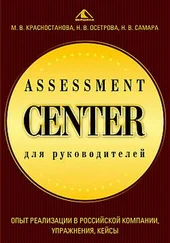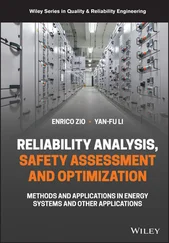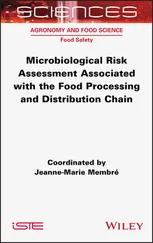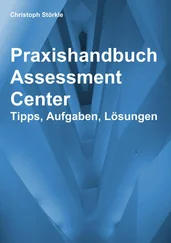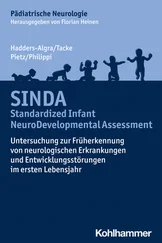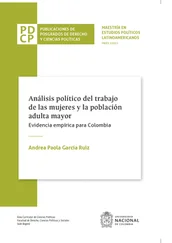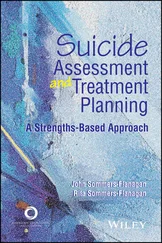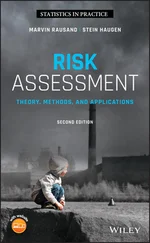Georgi Popov - Risk Assessment
Здесь есть возможность читать онлайн «Georgi Popov - Risk Assessment» — ознакомительный отрывок электронной книги совершенно бесплатно, а после прочтения отрывка купить полную версию. В некоторых случаях можно слушать аудио, скачать через торрент в формате fb2 и присутствует краткое содержание. Жанр: unrecognised, на английском языке. Описание произведения, (предисловие) а так же отзывы посетителей доступны на портале библиотеки ЛибКат.
- Название:Risk Assessment
- Автор:
- Жанр:
- Год:неизвестен
- ISBN:нет данных
- Рейтинг книги:4 / 5. Голосов: 1
-
Избранное:Добавить в избранное
- Отзывы:
-
Ваша оценка:
- 80
- 1
- 2
- 3
- 4
- 5
Risk Assessment: краткое содержание, описание и аннотация
Предлагаем к чтению аннотацию, описание, краткое содержание или предисловие (зависит от того, что написал сам автор книги «Risk Assessment»). Если вы не нашли необходимую информацию о книге — напишите в комментариях, мы постараемся отыскать её.
Explore the fundamentals of risk assessment with references to the latest standards, methodologies, and approaches Risk Assessment: A Practical Guide to Assessing Operational Risks
Risk Assessment: A Practical Guide to Assessing Operational Risks
Risk Assessment — читать онлайн ознакомительный отрывок
Ниже представлен текст книги, разбитый по страницам. Система сохранения места последней прочитанной страницы, позволяет с удобством читать онлайн бесплатно книгу «Risk Assessment», без необходимости каждый раз заново искать на чём Вы остановились. Поставьте закладку, и сможете в любой момент перейти на страницу, на которой закончили чтение.
Интервал:
Закладка:
Measure of the chance of occurrence expressed as a number between 0 and 1, where 0 is impossibility and 1 is absolute certainty. (ANSI/ASSP/ISO 31010‐2019)
An expression of the likelihood of occurrence of a mishap. (MIL‐STD‐882E‐2012)
“Probability” is an expression of chances or odds and is pure number with no units usually expressed in a variety of ways such as 1 chance in 100 or 1% of the occurrences or 0.01 or even 1E‐02. The first of these expressions is recommended as the best, most easily interpreted way to describe a probability. (Whiting 2013)
Process:
A series of progressive and interrelated steps by which an end is attained; continuous action, operation, or a series of changes taking place in a definite manner; the action of going forward. (ANSI/ASSP Z590.3‐2011(R2016))
Set of interrelated or interacting activities which transforms inputs into outputs. (ANSI/ASSP/ISO 45001‐2018)
Procedure:
Specified way to carry out an activity or a process. (ANSI/ASSP/ISO 45001‐2018)
Protective Measure (Risk Reduction Measure):
Any action or means used to eliminate or control access to hazards and/or reduce risks. (ANSI B11.0‐2020)
Qualitative Risk Assessment:
A risk assessment based on subjective ratings. (Authors)
Quantitative Risk Assessment:
A risk assessment based on data supported numerical ratings. (Authors)
Raw Risk:
The initial risk assessed assuming no risk‐reduction methods are in place. Raw risk serves as a baseline for the measurement of further risk reduction. Raw risk estimations may also be applicable to situations where the existing controls are considered very low on the Hierarchy of Controls and/or unreliable such as warnings, administrative level, or personal protective equipment type controls. (Authors)
Reasonable Foreseeable Misuse:
The predictable use of facilities, equipment, or materials in a way not intended in the original design. (ANSI/ASSP Z590.3‐2011(R2016))
Redesign:
A design activity that includes all retrofitting and altering activities affecting existing facilities, equipment, technologies, materials, and processes, and the work methods. (ANSI/ASSP Z590.3‐2011(R2016))
Residual Risk:
The risk remaining after risk reduction measures have been taken. (ANSI/ASSP Z590.3‐2011(R2016))
Risk remaining after risk treatment. (ISO Guide 73/ANSI/ASSP Z690.1‐2011)
The risk remaining after risk reduction measures (protective measures) are taken. (ANSI B11.0‐2020)
Risk:
An estimate of the probability of a hazard‐related incident or exposure occurring and the severity of harm or damage that could result. (ANSI/ASSP Z590.3‐2011(R2016))
Effect of uncertainty on objectives. (ANSI/ASSP/ISO 31000‐2018)
Effect of uncertainty. Note 4 to entry: Risk is often expressed in terms of a combination of the consequences of an event (including changes in circumstances) and the associated “likelihood” (as defined in ISO Guide 73:3009, 3.6.1.1) of occurrence. (ANSI/ASSP/ISO 45001‐2018)
An estimate of the combination of the likelihood of an occurrence of a hazardous event or exposure(s), and the severity of injury or illness that may be caused by the event or exposures. (ANSI/ASSP Z10.0‐2019)
A combination of the probability of occurrence of harm and the severity of that harm. (ANSI B11.0‐2020)
A combination of the likelihood of occurrence of injury or damage to health and the severity of injury or damage to health that results from a hazard. (NFPA 70E‐2018)
A combination of the severity of the mishap and the probability that the mishap will occur. (MIL‐STD‐882E‐2012)
Risk Acceptance:
Informed decision to take a particular risk. (ISO Guide 73/ANSI/ASSP Z690.1‐2011)
Risk Analysis:
Process to comprehend the nature of risk and to determine the level of risk. (ISO Guide 73/ANSI/ASSP Z690.1‐2011)
Risk Assessment:
A process that commences with hazard identification and analysis, through which the probable severity of harm or damage is established, followed by an estimate of the probability of the incident or exposure occurring, and concluding with a statement of risk. (ANSI/ASSP Z590.3‐2011(R2016))
Overall process of risk identification, risk analysis, and risk evaluation. (ISO Guide 73/ANSI/ASSP Z690.1‐2011)
Process(es) used to evaluate the level of risk associated with hazards and system issues. (ANSI/ASSP Z10.0‐2019)
The process by which the intended use of the machine, the tasks and hazards, and the level of risk are determined. (ANSI B11.0‐2020)
An overall process that identifies hazards, estimates the likelihood of occurrence of injury or damage to health, estimates the potential severity of injury or damage to health, and determines if protective measures are required. (NFPA 70E‐2018)
The scientific process that characterizes the nature and magnitude of health risks to humans and ecological receptors from chemical contaminants and other stressors that may be present in the environment. (Environmental Protection Agency)
Risk Avoidance:
Informed decision not to be involved in, or to withdraw from, an activity in order not to be exposed to a particular risk. (ISO Guide 73/ANSI/ASSP Z690.1‐2011)
Risk Centric
The state when an organization gains a sense of urgency around a fatal or serious injury/illness‐level risk as an actual catastrophic event; seeing risk of harm as actual harm itself resulting in the action of mitigating risk in advance of mishaps. (Walline 2014)
The mindset of acting upon risk rather than hazards. (Authors)
Risk Criteria:
Terms of reference against which the significance of a risk is evaluated. (ISO Guide 73/ANSI/ASSP Z690.1‐2011)
Risk Description:
Structured statement of risk usually containing four elements: sources, events, causes, and consequences. (ANSI/ASSP/ISO 31010‐2019)
Risk Driver:
Factor that has a major influence on risk. (ANSI/ASSP/ISO 31010‐2019)
Risk Evaluation:
Process of comparing the results of risk analysis with risk criteria to determine whether the risk and/or its magnitude is acceptable or tolerable. (ISO Guide 73/ANSI/ASSP Z690.1‐2011)
Risk Factor:
A component of risk derived from an identified hazard used to estimate and measure a risk level. The primary risk factors used in risk assessments are severity of consequence (S), and likelihood (L) or probability (P) of occurrence. Other risk factors used include exposure (E), frequency of exposure (F), detection of failure (D), control reliability (CR), and prevention effectiveness (PE). (Authors)
Risk Identification:
Process of finding, recognizing, and describing risks. (ISO Guide 73/ANSI/ASSP Z690.1‐2011)
Risk Level:
The characterization of risk as either High, Serious, Medium, or Low. (MIL‐STD‐882E‐2012)
Risk Management:
Coordinated activities to direct and control an organization with regard to risk. (ANSI/ASSP/ISO 31000‐2018)
Risk Management Plan:
Scheme within the risk management framework specifying the approach, the management components and resources to be applied to the management of risk. (ANSI/ASSP/ISO 31000‐2018)
Risk Management Process:
Systematic application of management policies, procedures, and practices to the activities of communicating, consulting, establishing the context, and identifying, analyzing, evaluating, treating, monitoring, and reviewing risk. (ANSI/ASSP/ISO 31000‐2018)
Читать дальшеИнтервал:
Закладка:
Похожие книги на «Risk Assessment»
Представляем Вашему вниманию похожие книги на «Risk Assessment» списком для выбора. Мы отобрали схожую по названию и смыслу литературу в надежде предоставить читателям больше вариантов отыскать новые, интересные, ещё непрочитанные произведения.
Обсуждение, отзывы о книге «Risk Assessment» и просто собственные мнения читателей. Оставьте ваши комментарии, напишите, что Вы думаете о произведении, его смысле или главных героях. Укажите что конкретно понравилось, а что нет, и почему Вы так считаете.

